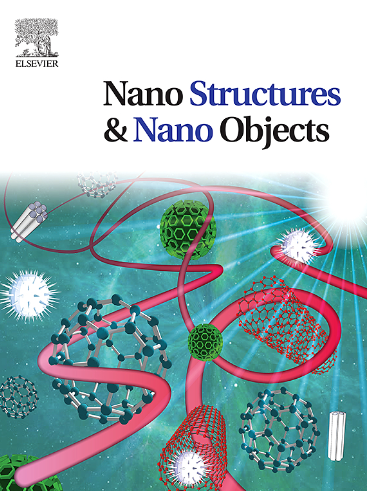辐射对重力驱动纳米流体在对流加热壁上流动的影响:RSM和ANN预测分析
IF 5.45
Q1 Physics and Astronomy
引用次数: 0
摘要
重力驱动的流动既存在于水库工程中,也存在于生物系统中,如血液中的营养物质运输和植物中的大分子迁移。在每种情况下,工程纳米颗粒的结合系统地增强了传热和传质,克服了传统制冷剂的局限性。鉴于这些应用,本研究通过开发计算工具和预测范式来帮助优化和预测卡森纳米流体在加热板上的传热和传质流的期望输出,从而为现有的知识体系做出贡献。为了分析这些复杂的纳米粒子影响现象,在伯努利原理下建立了守恒方程的数学模型。采用相似变换将控制偏微分方程简化为常微分方程组,然后采用谱局部线性化方法求解,收敛速度快,精度高。在随机Box-Behnken (BB)设计下,将数值计算得到的响应作为人工神经网络(ANN)和响应面法(RSM)的预测数据。该人工神经网络采用MATLAB内置的贝叶斯正则化算法。我们的研究结果表明,浮力诱导数Gr和温度现象Sr的共同作用降低了换热速率。在助流和逆流中,能量场和动量场都有增强的现象。相反的流动与较高的热辐射的相互作用经历了增强的传热速率,而内部产生的热量(Ec)的显著参与优化了传热机制,被认为是有效的传热管理。此外,通过RSM/ANN的预测算法,我们获得了许多生物医学和工业应用的有效能量优化和冷却技术的有用知识。本文章由计算机程序翻译,如有差异,请以英文原文为准。

Radiation effect on gravity-driven nanofluid flow over a convective heated wall: RSM and ANN prediction analysis
Gravity-driven flows occur in both reservoir engineering and biological systems such as nutrient transport in blood and macromolecular migration in plants. In each case, the incorporation of engineered nanoparticles systematically enhances heat and mass transfer, overcoming the limitations of conventional refrigerants. In light of these applications, present investigation contribute to the existing body of knowledge through the development of a computational tool and predictive paradigms to help optimize and predict the desire output of heat and mass transfer flow of Casson nanofluid over a heated plate. To analyze these complex, nanoparticle influenced phenomena, a mathematical model is presented under the Bernoulli principle with conservation equations. Similarity transformation is employed to reduce the governing partial differential equations into a systems of ordinary differential equations, which are then solved using the spectral local linearization method for rapid convergence and high accuracy. The obtained responses from the numerical computations are used as prediction data for both the Artificial Neural Network (ANN) and Response Surface Methodology (RSM) under the randomized Box-Behnken (BB) design. The ANN adopt the MATLAB inbuilt Bayesian regularization algorithm. Our findings highlight that, co-contribution of buoyancy induced number and soret phenomenon diminished the heat transfer rate. For both assisting and opposing flow, an enhance phenomenon of energy and momentum field is experienced. The interplay of opposing flow with higher thermal radiation experienced an enhanced heat transfer rate while significant involvement of the internally generated heat () optimizes the heat transfer mechanism identify as effective heat transfer management. Moreover, through the prediction algorithm by RSM/ANN, we acquired a useful knowledge on effective energy optimization and cooling techniques for numerous biomedical and industrial applications.
求助全文
通过发布文献求助,成功后即可免费获取论文全文。
去求助
来源期刊

Nano-Structures & Nano-Objects
Physics and Astronomy-Condensed Matter Physics
CiteScore
9.20
自引率
0.00%
发文量
60
审稿时长
22 days
期刊介绍:
Nano-Structures & Nano-Objects is a new journal devoted to all aspects of the synthesis and the properties of this new flourishing domain. The journal is devoted to novel architectures at the nano-level with an emphasis on new synthesis and characterization methods. The journal is focused on the objects rather than on their applications. However, the research for new applications of original nano-structures & nano-objects in various fields such as nano-electronics, energy conversion, catalysis, drug delivery and nano-medicine is also welcome. The scope of Nano-Structures & Nano-Objects involves: -Metal and alloy nanoparticles with complex nanostructures such as shape control, core-shell and dumbells -Oxide nanoparticles and nanostructures, with complex oxide/metal, oxide/surface and oxide /organic interfaces -Inorganic semi-conducting nanoparticles (quantum dots) with an emphasis on new phases, structures, shapes and complexity -Nanostructures involving molecular inorganic species such as nanoparticles of coordination compounds, molecular magnets, spin transition nanoparticles etc. or organic nano-objects, in particular for molecular electronics -Nanostructured materials such as nano-MOFs and nano-zeolites -Hetero-junctions between molecules and nano-objects, between different nano-objects & nanostructures or between nano-objects & nanostructures and surfaces -Methods of characterization specific of the nano size or adapted for the nano size such as X-ray and neutron scattering, light scattering, NMR, Raman, Plasmonics, near field microscopies, various TEM and SEM techniques, magnetic studies, etc .
 求助内容:
求助内容: 应助结果提醒方式:
应助结果提醒方式:


